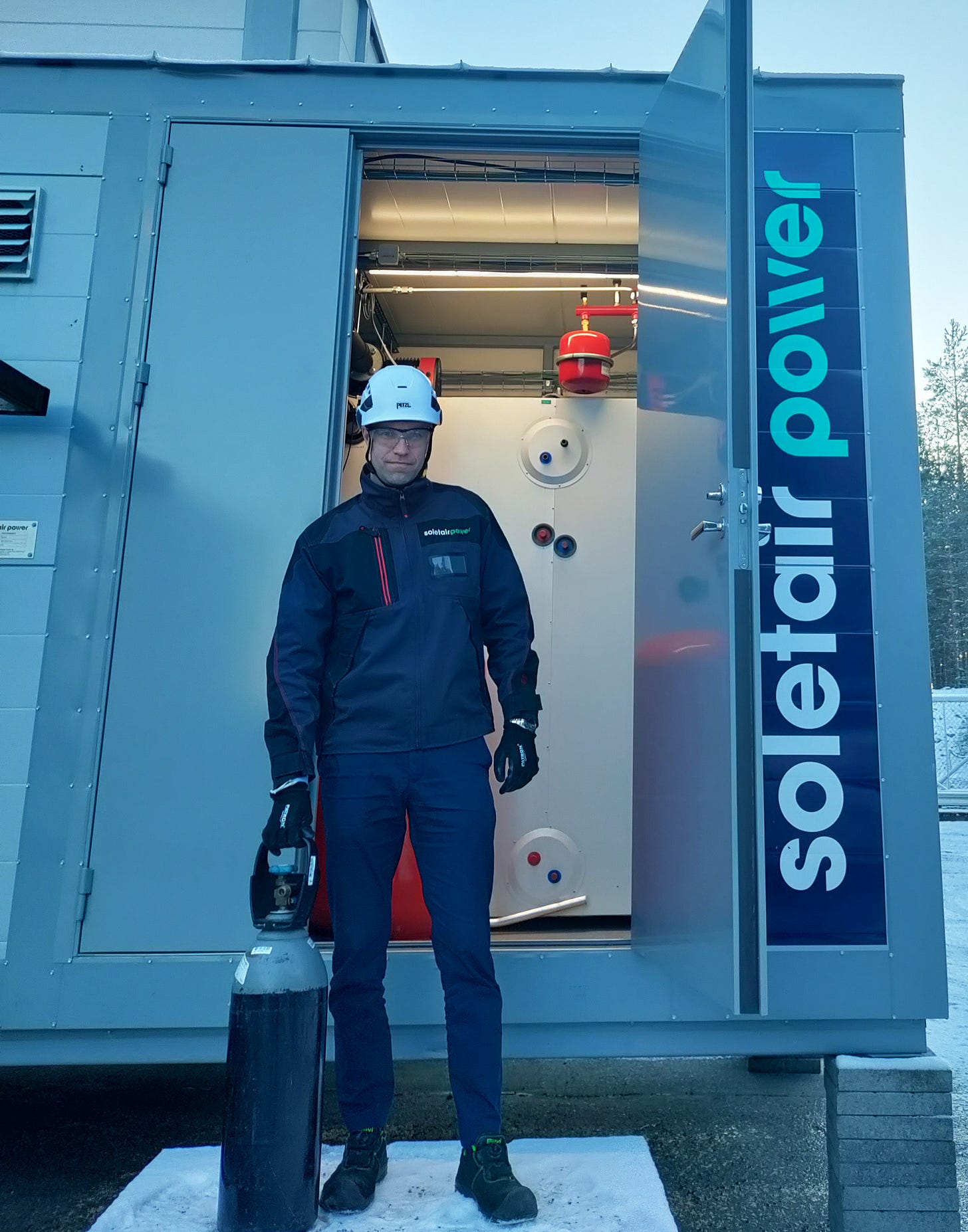How a Finnish startup turns ventilation systems into jet-fuel-grade CO2 goldmines
By capturing ultra-pure CO2 from buildings and selling it to SAF producers, Soletair Power is rethinking both carbon removal and aviation fuel supply—with economics that actually make sense.
While most direct air capture (DAC) companies struggle with costs exceeding $500 per tonne of CO2, a Finnish startup claims it has cracked the code on profitable carbon removal by integrating the technology directly into building ventilation systems.
Soletair Power, which has installed six commercial systems across Europe and the Middle East, is now targeting the aviation industry with a proposition that almost sounds too good to be true: buildings that make money while capturing CO2 for sustainable fuel production.
According to CEO Petri Laakso, the company's approach can pay for itself in under two years through energy savings alone, with captured CO2 providing additional revenue on top of those savings.
"When you do this in buildings, you start earning money," Laakso said when talking to Sustainability in the Air.
The company is currently in discussions with airports in the Middle East and has partnerships with sustainable aviation fuel producers, positioning itself at the intersection of building efficiency and aviation decarbonisation.
Leveraging existing infrastructure
Unlike traditional direct air capture facilities that require massive fans and energy-intensive operations in remote locations, Soletair Power's approach piggybacks on existing building ventilation systems. The insight, according to Laakso, is that buildings already move the enormous volumes of air needed for meaningful CO2 capture.
"The only place in this world where we ventilate enough air already today to capture gigatons of CO2 is the building ventilation," Laakso explained. "That infrastructure we do have today is up and running. So why don't we just use that?"
Each unit can capture up to 20 tons of CO2 annually and integrates directly with a building's HVAC system. The company claims customers can reduce ventilation energy consumption by 50% while simultaneously capturing high-purity CO2.
Aviation industry applications
The aviation sector represents a key target market for Soletair Power. Airport terminals, with their massive HVAC systems and energy costs, could potentially become both more efficient and carbon-negative.
The captured CO2, compressed to 99.999% purity, can be used as feedstock for sustainable aviation fuel production. The company has partnered with Liquid Sun, a Finnish e-fuel producer, to demonstrate this application.
"We capture CO2, it's in a tank, and then we just deliver it to them and they can use it," Laakso said. According to Laakso, the key advantage lies in the quality: Soletair Power's system produces CO2 at 99.999% purity, compared to many competitors who capture CO2 at 95% purity or lower, sometimes as low as 80%.
"That's the big difference between us and many other direct air capture companies," Laakso explained. Lower-purity CO2 cannot be properly compressed into liquid form, making it difficult to transport and limiting its commercial applications for fuel production.
Economics that defy industry norms
Soletair Power claims its technology can achieve negative capture costs in hot climates where air conditioning costs are substantial. Laakso said that a 2,000-square-meter office in Singapore, for example, could save $40,000 annually in energy costs while capturing CO2.
"If you do this in Saudi or UAE, the capture cost is negative," Laakso said, citing a McKinsey study of the company's next-generation technology. "So you actually start earning money while you are capturing."
The economics work because buildings with lower indoor CO2 levels require less fresh air intake, reducing the energy needed to cool or heat incoming air.
In Laakso's example, a building's ventilation system might consume 400 megawatt hours annually without the technology, versus 220 megawatt hours with it installed, saving 180 megawatt hours while using only 20 megawatt hours to operate the capture system.
Market scepticism and competition
Laakso claims that capture costs below $50 per ton are physically impossible, based on the fundamental physics of air movement.
"You need to move 1.4 million cubic meters of air to capture one ton of CO2," he noted. "It doesn't move by itself. And if you have a pressure drop, you need energy to compensate for that."
The company holds patents in the United States and Europe for its building integration approach. Several competitors, including Neocarbon in Berlin, are pursuing similar strategies with different technical approaches.
Multiple revenue streams
For building owners, the value proposition extends beyond energy savings and CO2 sales. According to Laakso, green buildings can command rental premiums of 3% or more while qualifying for favourable financing terms.
"If you have a hundred million dollar building and you get a half a per cent better loan terms, it's going to be 500,000 euros a year saved," he said.
Carbon credits, surprisingly, represent the smallest revenue component. "There are carbon credits, but it's the smallest thing on the whole equation," Laakso said.
Scaling ambitions
Soletair Power plans to sell 5,000 units by 2030, which would capture approximately 130,000 tons of CO2 annually. Even at that scale, the company would represent a tiny fraction of the global HVAC market.
The company projects 3 million euros in revenue for 2024 and estimates 10 million euros for 2025, primarily from equipment sales. Laakso said the company is seeking to close a funding round in the coming months to support expansion.
The company's vision mirrors the adoption curve of solar panels, with Laakso drawing on his background as a former solar industry executive. "We want to revolutionise building ventilation," he said. "So I think as a technology, this will be the mainstream."
For aviation stakeholders evaluating carbon removal options, Soletair Power's approach represents a different model from traditional direct air capture investments, if it scales. As Laakso puts it: "Do you want to spend money by capturing it or by saving money by capturing it?"





